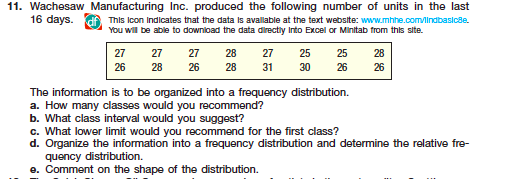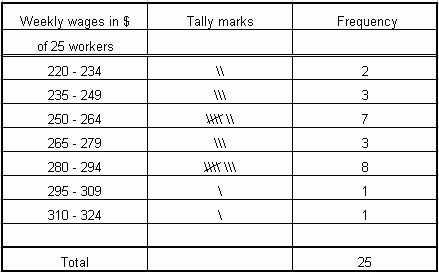

- #Frequency distribution minitab 16 how to
- #Frequency distribution minitab 16 series
- #Frequency distribution minitab 16 download
Furthermore, it is calculated as the average squared deviation of each number from the mean of the data set.Īnswer: It is tremendously important as a means to visualize and understand the data being considered.
#Frequency distribution minitab 16 how to
In addition, we know that the variance is a measure of how to spread out a data set is. Standard Deviation= \) and standard derivation is the most commonly used measures of spread. There is another formula for calculation of standard deviation, effectively derived from the traditional formula. N= The summation of frequency Another Approach for Standard Deviation Before you start, though, a couple of things to take into account: (a) empty spaces - including two or more commas in a. Just enter your scores into the textbox below, either one value per line or as a comma delimited list, and then hit the 'Generate' button. Here, D= Deviation of an item relative to the mean calculated as, D= Xi – Mean This tool will create a histogram representing the frequency distribution of your data. The mid values of the classes are derived dividing the sum of upper and lower value of class and this value is used for calculations. The only difference occurs when using the values of observations. The approach towards the calculation of standard deviation for frequency distribution is pretty much the same as for discrete series.
#Frequency distribution minitab 16 series
N= The Summation of frequency Frequency Distribution Series Here, D= Deviation of an item relative to the mean calculated as, D= X – Meanį= Frequencies corresponding to the observations Hence, the formula for calculation of standard deviation changes accordingly to include frequency. In discrete series, each observation is associated with a frequency.

N= The number of observations Discrete Series Here, D= Deviation of an item relative to mean Finally, the square root of this value is the standard deviation. Further, we calculate the value of deviation for each observation about mean using the formula: D= X – Mean. In the next step, we divide the summation of squares of these deviations by the number of observations. Initially, we calculate the value of the arithmetic mean. As there are three classes of distributions, we calculate the standard deviation for all three types in a different way. Note that unlike mean deviation that can be measured by mean, median and mode, S.D. Range and Mean Deviation for Ungrouped Data.Range and Mean Deviation for Grouped Data.
#Frequency distribution minitab 16 download
You can download Cheat Sheet of Statistics by clicking on the download button below Technically, the standard deviation is the square root of the arithmetic mean of the squares of deviations of observations from their mean value. Standard deviation is the most important tool for dispersion measurement in a distribution. Rather they make use of the squares of deviations. Unlike mean deviation, standard deviation and variance do not operate on this sort of assumption. To overcome this limitation variance and standard deviation came into the picture. But a major problem is that mean deviation ignores the signs of deviation, otherwise they would add up to zero. We have studied mean deviation as a good measure of dispersion.


 0 kommentar(er)
0 kommentar(er)
